Introduction
The image of Jesus riding into Jerusalem on a colt is one of the most iconic scenes in the Christian faith. It’s a moment brimming with symbolism, marking both triumphal entry and a foreshadowing of the events to come. Let’s delve into the details of this pivotal moment in Jesus’ ministry.
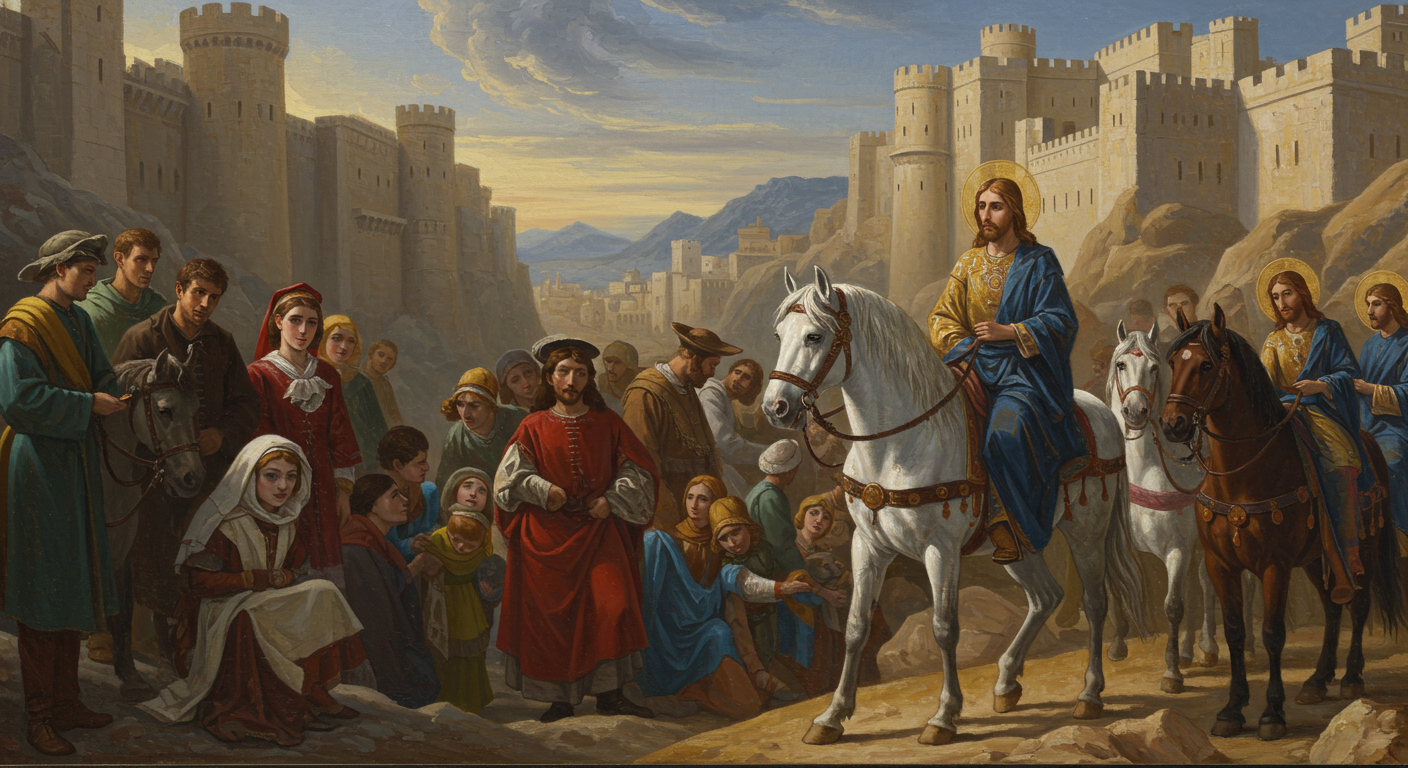
The Prophecy’s Fulfillment
Zechariah 9:9 prophesied this very event centuries earlier. Jesus’ humble arrival, riding not a warhorse but a donkey’s colt, fulfilled this prophecy perfectly. This act subtly highlighted the nature of his kingdom: not of this world.
The Significance of the Colt
The choice of a colt, a young donkey, was deliberate. It symbolized peace and humility, contrasting sharply with the expectation of a conquering king arriving on a warhorse. The symbolism is rich and layered.
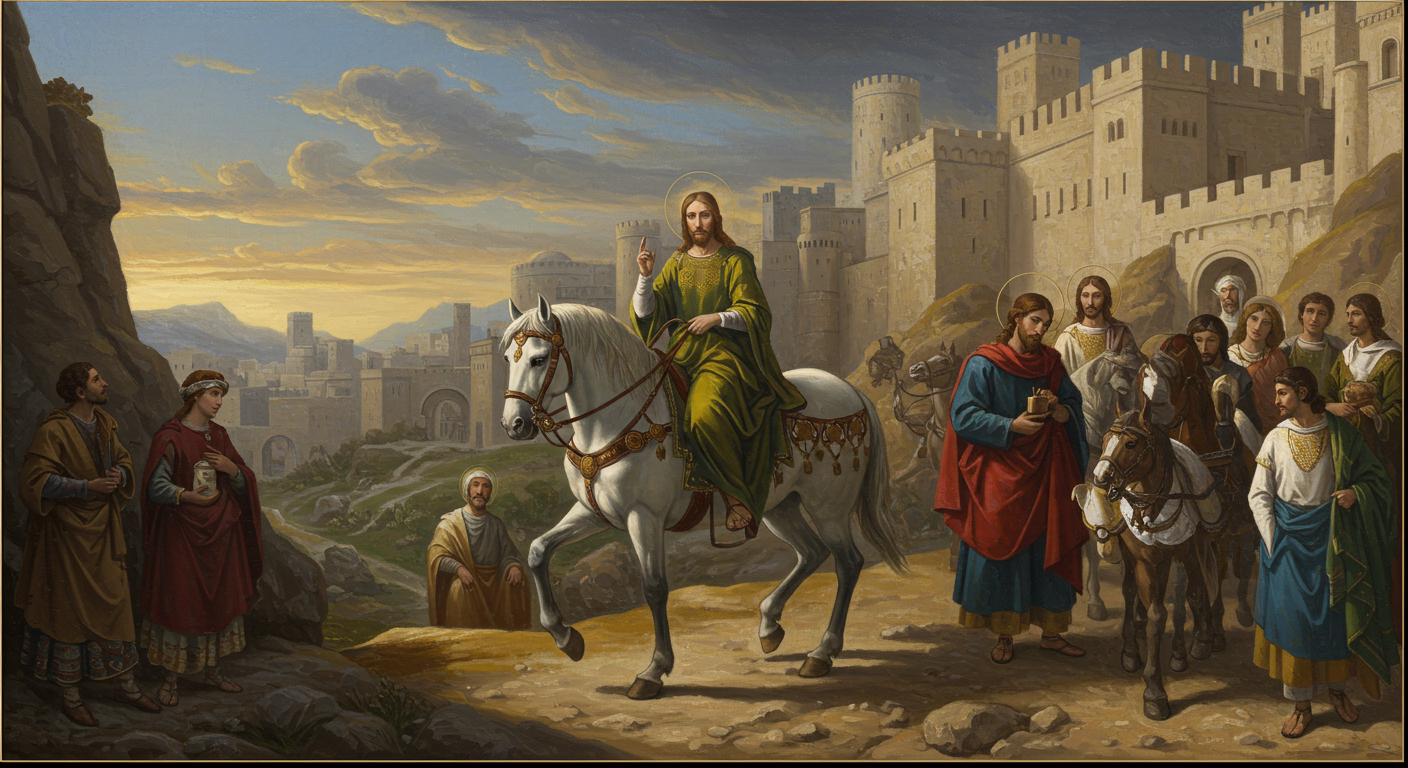
The Route to Jerusalem
Jesus and his disciples likely took a route that would maximize impact, allowing for the crowds to gather and join the procession. The journey itself would have been charged with anticipation.
The Growing Crowd
As Jesus approached Jerusalem, the crowds swelled. People from all walks of life – men, women, children – joined the procession, laying down their cloaks and branches in his path.
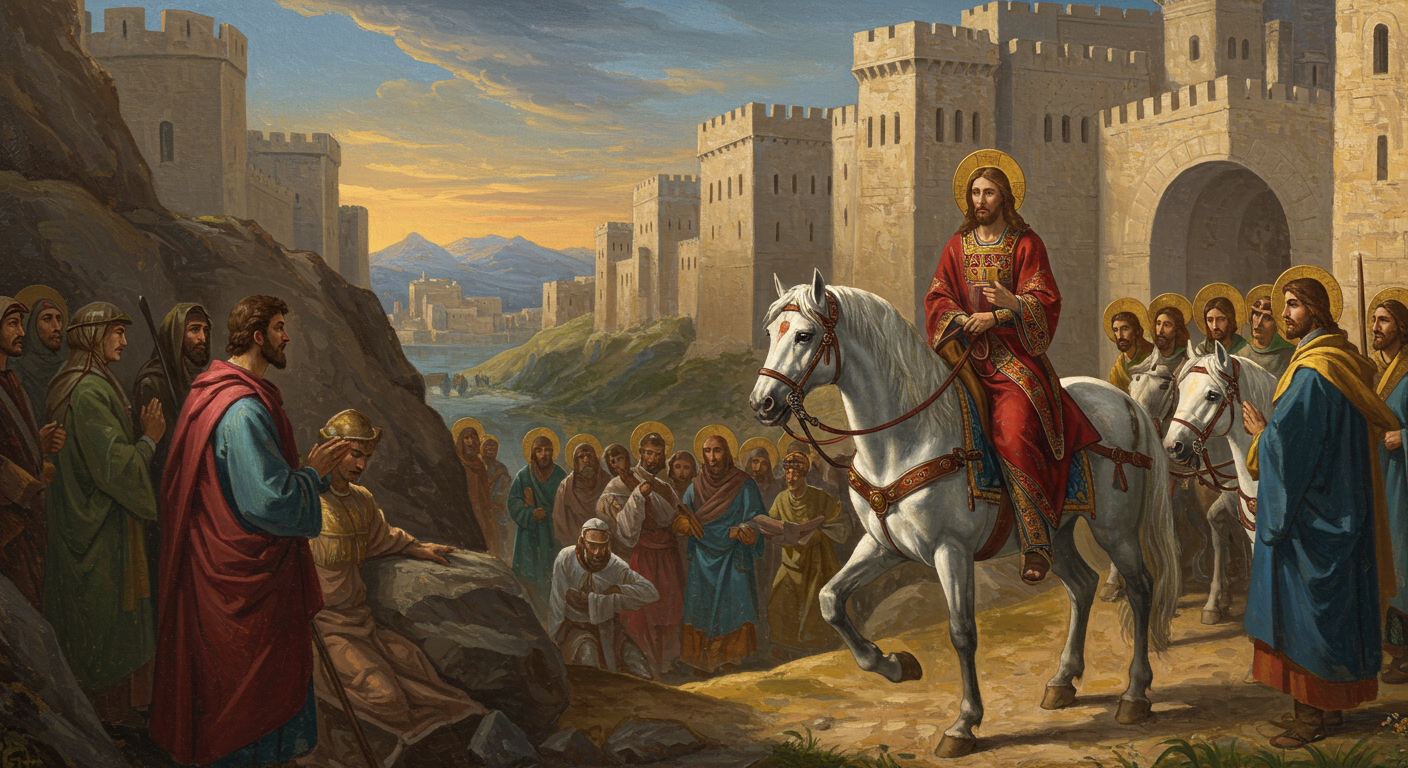
The Acclaim of the Multitude
The crowds shouted “Hosanna!” which means “save now!” or “God save us.” This was not just a simple greeting but a passionate plea for salvation, reflecting the hopes and expectations surrounding Jesus.
The Significance of Palm Branches
The palm branches were symbols of victory and triumph, a common practice in welcoming royalty or conquering heroes. Their use underscored the people’s belief in Jesus as the Messiah.
The Meaning of “Hosanna”
The repeated cries of “Hosanna” demonstrate the deep-seated faith and hope that Jesus inspired in those who followed him. Learn more about the meaning of this significant word.
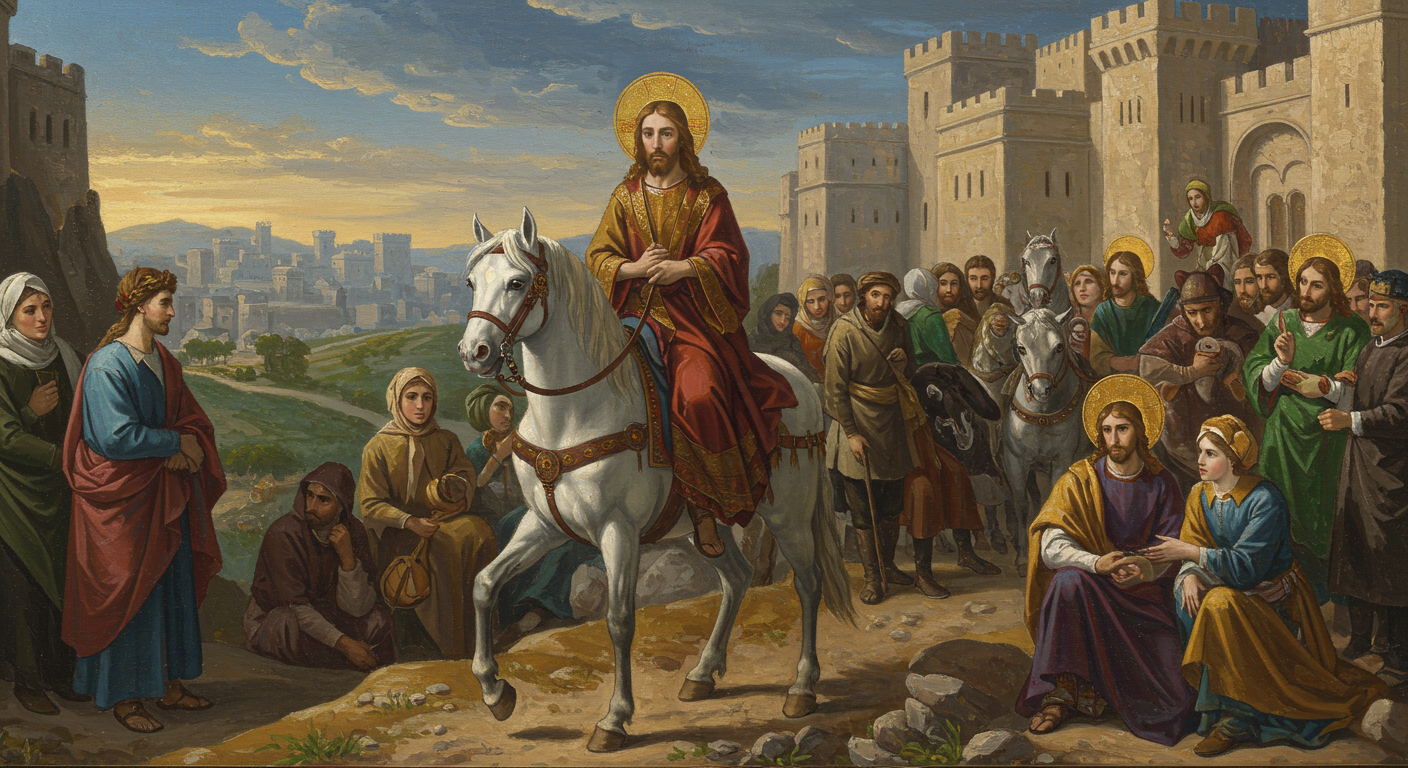
Jesus’ Entry as a King
While humble, Jesus’ entry was undeniably a royal procession. The crowds, the palm branches, and their acclamations all pointed towards his status as the long-awaited King.
A Mixture of Hope and Foreshadowing
The joyous celebration was intertwined with an undercurrent of tension. The events that followed in Jerusalem demonstrate the complexity of the situation.
The Pharisees’ Reaction
Not everyone shared the enthusiasm. The Pharisees and other religious leaders viewed Jesus’ actions with suspicion and hostility, recognizing the challenge to their authority.

The Sanhedrin’s Concerns
The Sanhedrin, the Jewish ruling council, was particularly concerned by the popular support for Jesus, seeing it as a potential threat to Roman rule.
The Political Implications
Jesus’ arrival in Jerusalem held significant political implications. His popularity among the people was not lost on the Roman authorities, who closely monitored the situation.
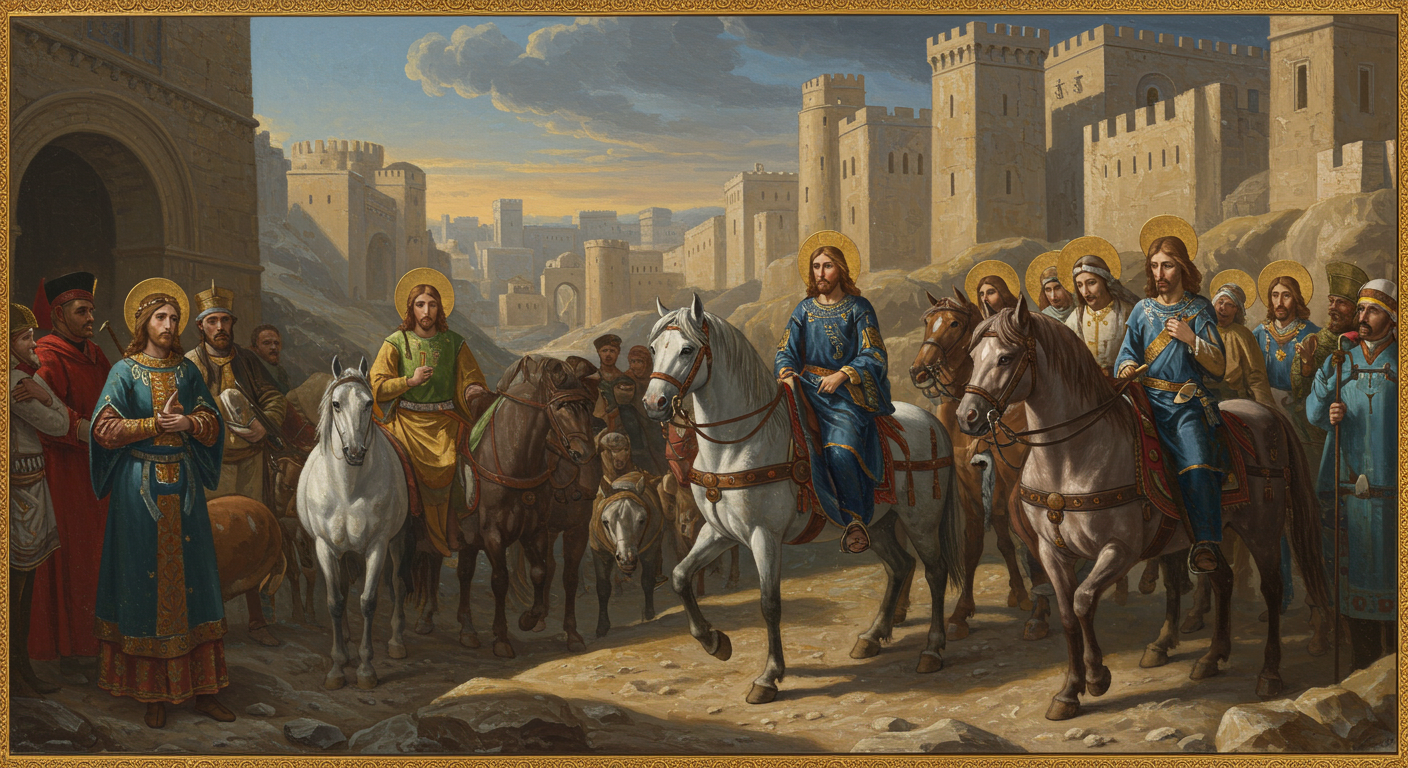
Jesus’ Awareness of His Fate
Jesus knew the events that awaited him in Jerusalem. This triumphal entry was not a naive celebration but a conscious move towards his impending sacrifice.
The Cleansing of the Temple
Shortly after his triumphant entry, Jesus cleansed the Temple, further highlighting his challenge to the religious establishment. Read more about the cleansing.
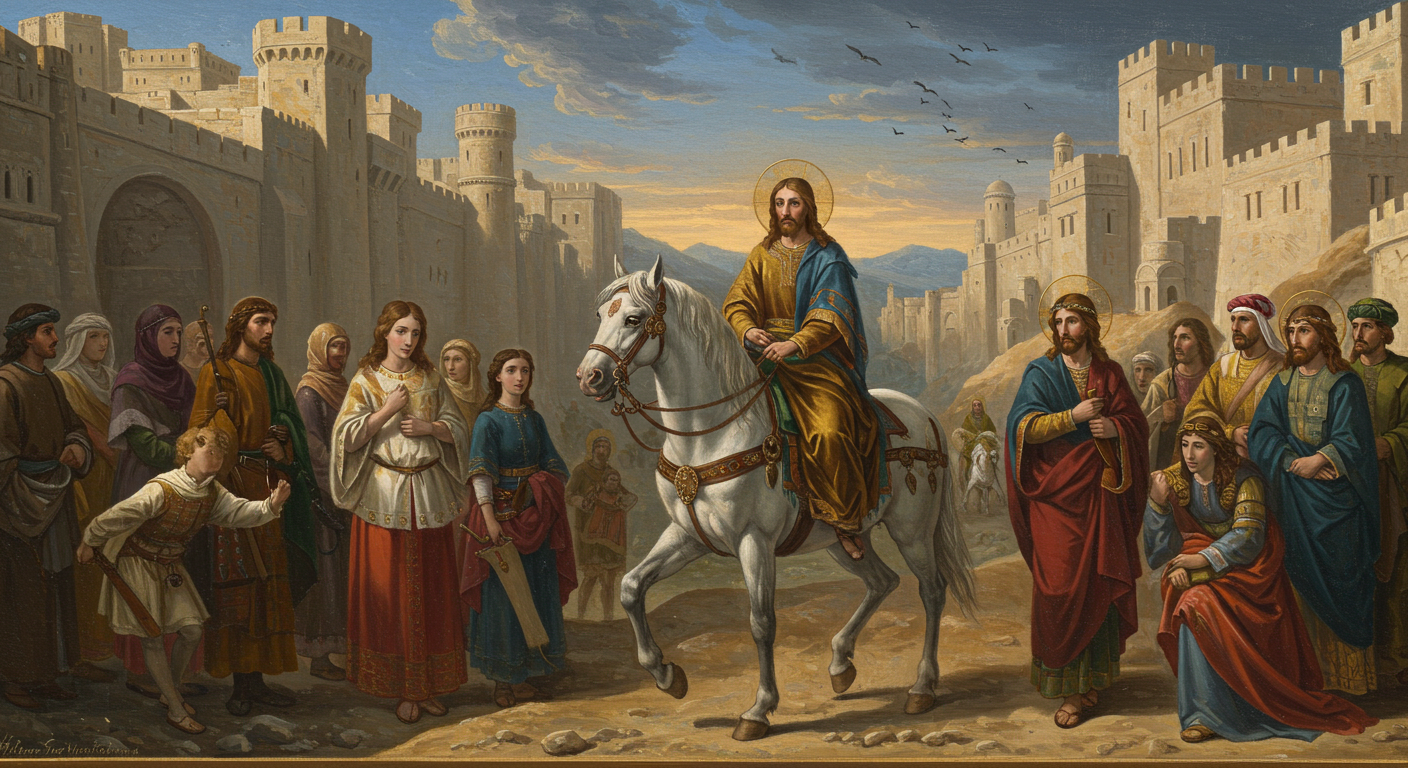
The Last Week of Jesus’ Life
This triumphal entry marks the beginning of the final week of Jesus’ life, a week filled with profound teachings, intense confrontations, and ultimately, his crucifixion.
The Weight of Expectation
The expectations surrounding Jesus were immense. The crowds’ hope for a political liberator was about to be dramatically redefined.
Conclusion
The ride into Jerusalem is more than just a historical event; it’s a profound theological statement. It perfectly encapsulates the tension between triumph and tragedy, hope and sacrifice, that defines the life and ministry of Jesus. Further study will reveal even more layers of meaning.
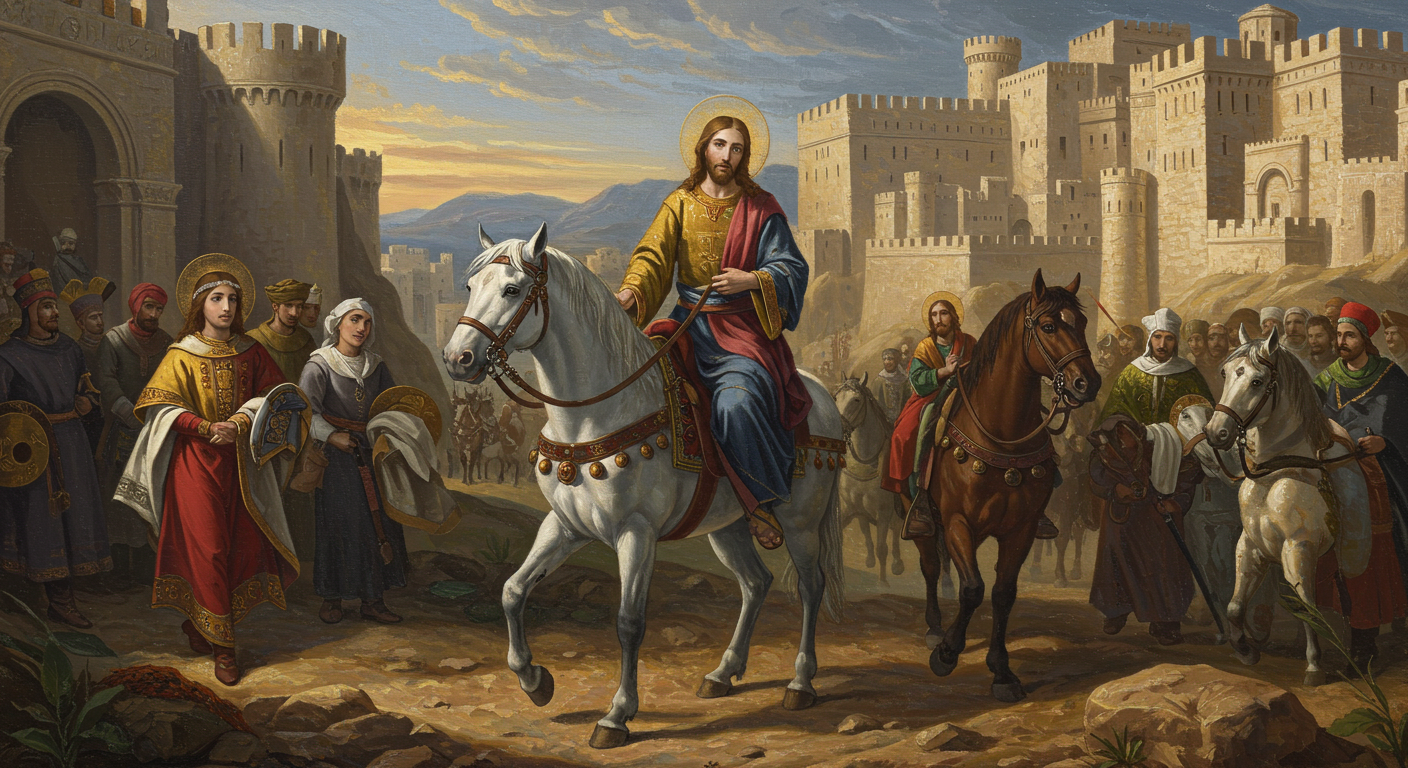
Frequently Asked Questions
What is the significance of Jesus riding a colt? The colt symbolized humility and peace, contrasting with the expectation of a conquering king.
Why did the crowds shout “Hosanna”? “Hosanna” is a plea for salvation, expressing their hope and belief in Jesus as the Messiah.
What happened after Jesus entered Jerusalem? He cleansed the Temple and began the events leading up to his crucifixion.
How did the religious leaders react to Jesus’ entry? They viewed it with suspicion and hostility, seeing it as a threat to their authority and Roman rule.
What does the triumphal entry foreshadow? It foreshadows both the fulfillment of prophecy and the tragic events that would follow, ultimately culminating in Jesus’ crucifixion.
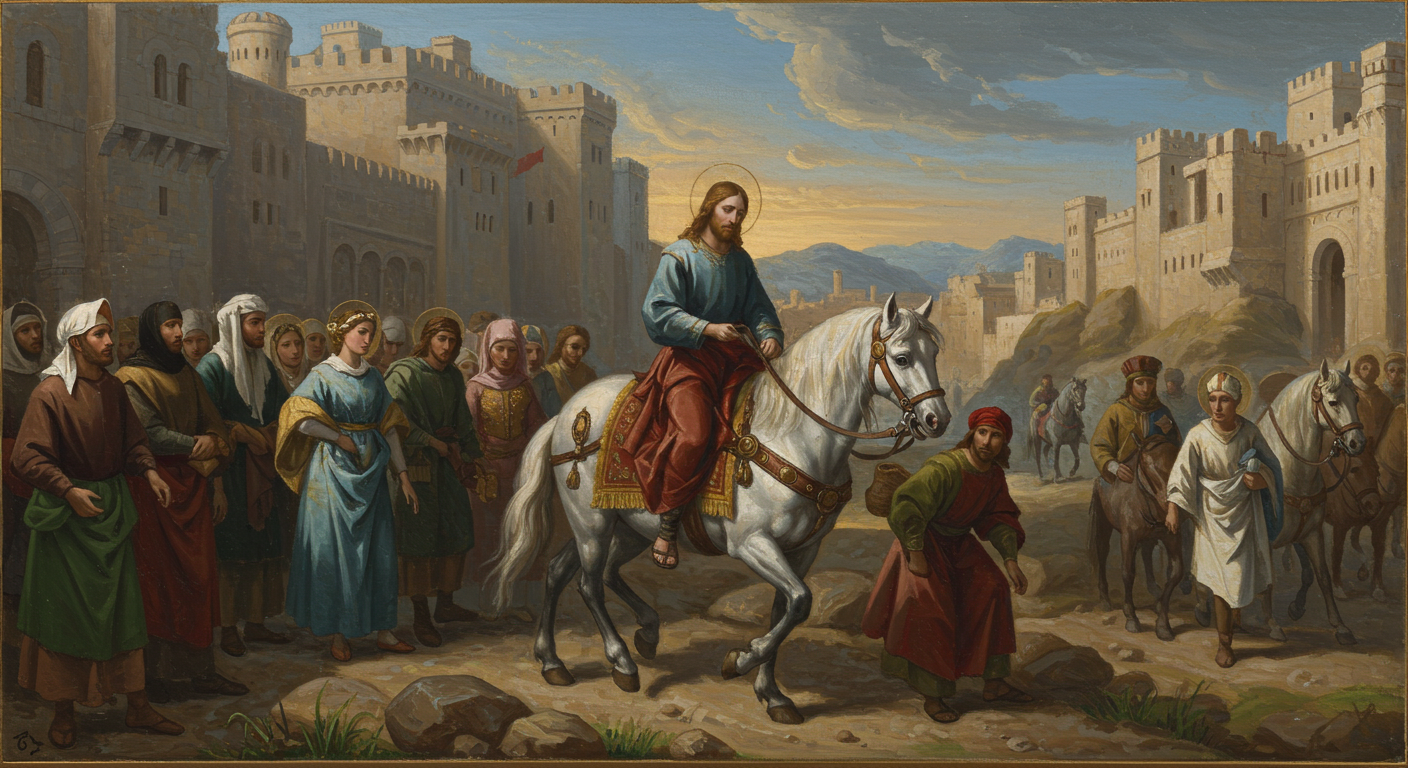
Leave a Reply